Puerto Montt to Castro, Isla Chiloé: Island Riding
- on 03.21.09
- Chile
- No Comments
- Digg
- Del.icio.us
Monday, March 16
It was a gray, wet morning when we awoke in Puerto Montt. We can’t remember who, but someone had recommended Puerto Montt to us at some point on the trip because it was circled on our map. In the morning drizzle, it had little charm and we were soon on the road.
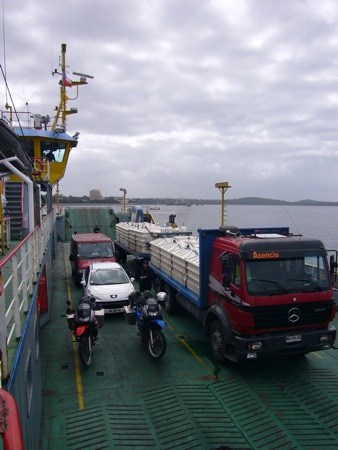
Our goal for the day was the small pueblo of Castro, on the large island of Chiloé. The ride southwest to the port town of Pargua was mostly straight and uninspiring. We were wondering how the ferry would be, if it would be another ghetto home made barge like we’d experienced a few times before, but as we pulled up we were pleasantly surprised. There was no wait and we rolled right onto a modern ferry vessel without even stopping from the highway.
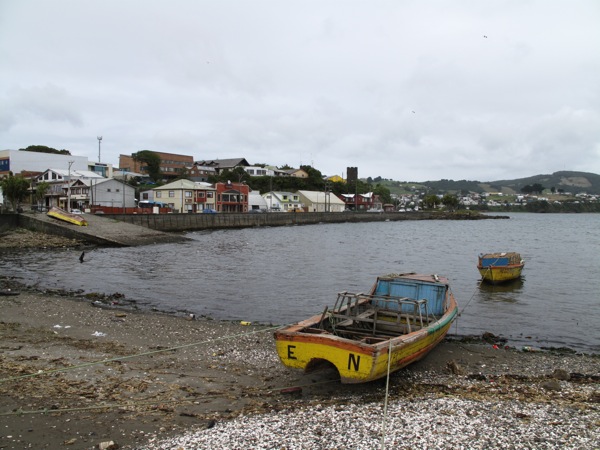
We put the bikes on the centerstands to avoid unwanted tip overs and bought ourselves some overpriced coffee to warm up. Riding onto a ferry only reinforced the feeling of being home in the Northwest. That feeling of similarity was quickly shattered when we saw the penguins swimming alongside the ferry, jumping out of the water to catch some air before disappearing beneath the surface. I’d never seen a penguin in the wild before. We had huge grins on our faces as the penguin show was joined but sea lions lazily splashing on the surface as the ferry sailed past.
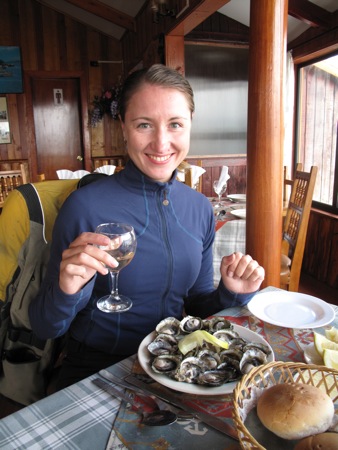

The ferry ride was a short thirty minutes at most and we were debarked and on the road. Our next stop was the fishing town of Ancud. Inna had a date with some oysters. Two different fellow travelers had recommended to us trying the oysters here. We found a good restaurant overlooking the harbor, and Inna had a reportedly delicious plate of fresh oysters while I had some empanadas. The oysters were well recommended. Her next dish was a curanto, which turned out to be a strange dish. We were expecting a stew or elaborate soup, but instead it was a small bowl of broth next to a plate with cuts of all possible meats, mussels, and clams. It was a huge meal that she couldn’t possibly finish. Reviews were mixed.
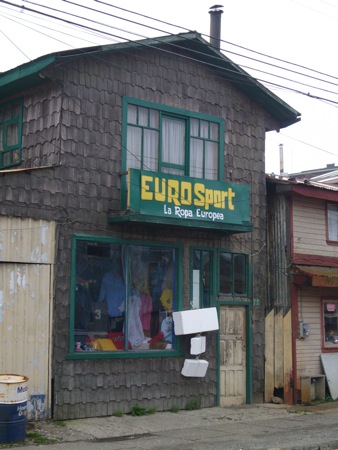

After lunch we rode south on R 5, which on Chiloé is the final stretch of the Panamerican highway that stretches from Alaska to the bottom of Chiloé. We soon detoured, to get off the main road and visit the small towns on the eastern coast. Our first stop was the fishing village of Quemchi. It was located on a picturesque harbor, but otherwise there wasn’t much to the town. We stopped momentarily to take some pictures of the brightly painted fishing vessels in the harbor, and then continued south.
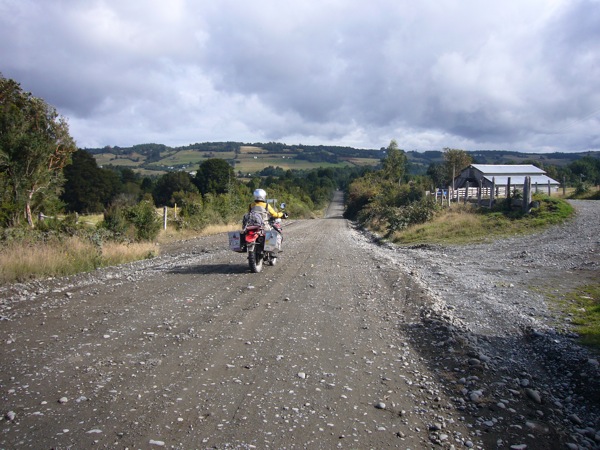
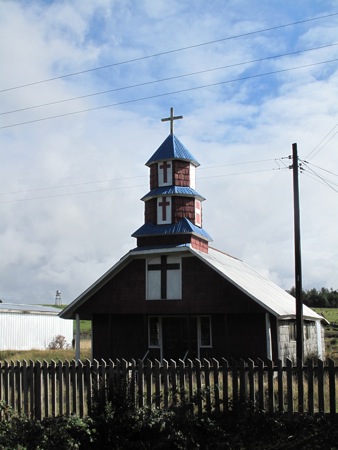
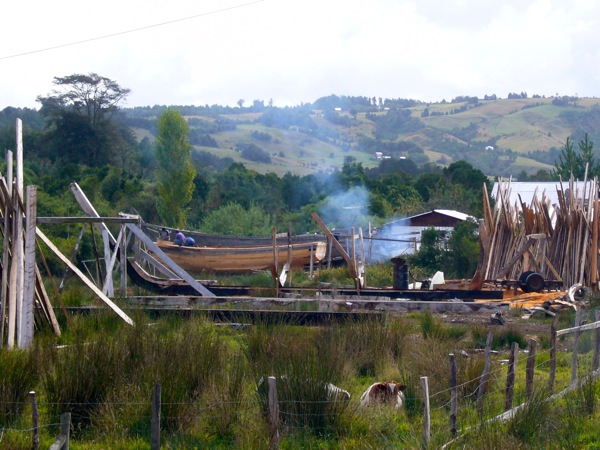
The road was dirt south of Quemchi, but it was well packed and without too much loose gravel. The scenery was all small farms scattered amongst the brown hills. We came to a small river crossing, which extended out into a marsh. On the other side, locals were hard at work building ships. I’d never seen real old fashioned wood ship building before, so we stopped for a moment to look at the boats in various stages of completion. The workers noticed us on the bridge and waved. I gave a big wave back and we were off up the hill.
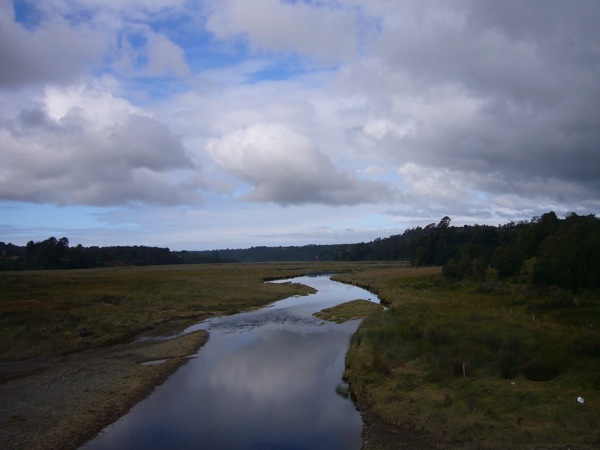

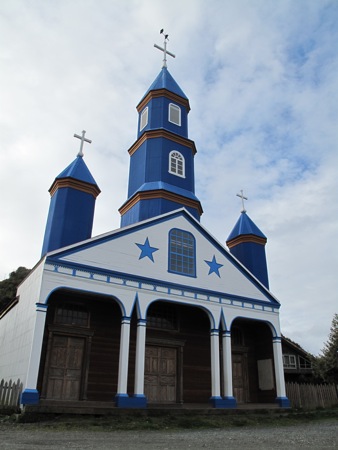
We came to the small town of Tenaún, which had the prettiest church on the island. Chiloé is famous for its wooden churches with eight-sided steeples. A number of them had recently been designated world heritage sites and were being restored.

We were fortunate enough to find the church open, and we stepped in for a quick look around. In the interior, you could really see how beautiful the alerce wood had been finished. The home made and individualized pews in the back were charming.

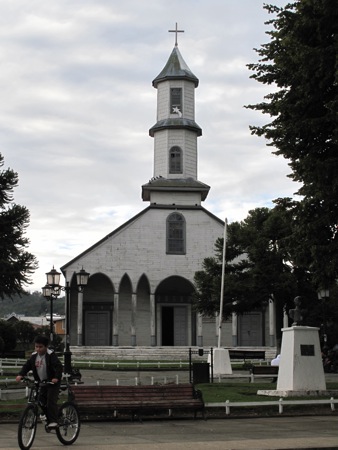
We rode through more farmland hills and arrived in the town of Delcahue, which failed to impress. The church there lacked the vibrant colors of some of the others, and the white paint was peeling off. It was late in the day by this time, so we made the quick journey back to R 5 and down to Castro. Castro was a busy town, and without too much drama we found a suitable hotel. After such a big lunch, we were not very hungry, so we split a salad and more empanadas at a big cafe on the main plaza.
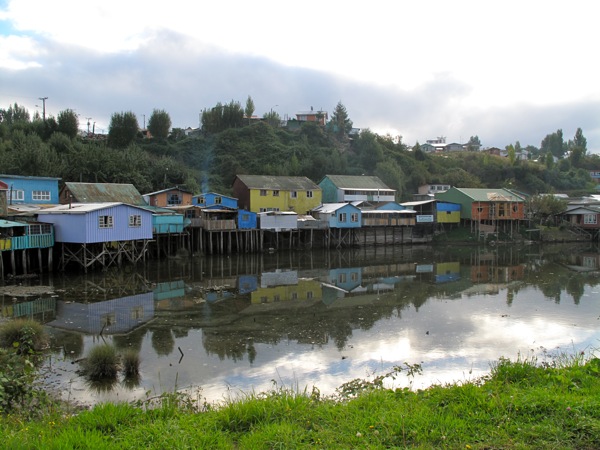
We retired to the hotel for our usual evening of writing and planning for the next day. To our dismay, we discovered the ferry from the south of Chiloé to Chaitan only ran in January and February. The most feasible alternative was an overnight ferry from Puerto Montt in two days time. We had seen everything we had wanted to see on Chiloe except the penguin reserve, and spending more time in Puerto Montt lacked appeal. It would mean too much lounging around, which didn’t feel right. We made the decision to push hard the next day, visiting the penguin reserve in the morning and then riding all the way to Bariloche, Argentina. From Bariloche we could head south, and then cross back south into Chile just south of Chaitan, at the pass near Futaleufu. It would be lots of riding, but it would mean two more crossings of the Andes, which beats sitting around waiting for an expensive and unpleasant night on a ferry.
Leave a Reply
You must be logged in to post a comment.